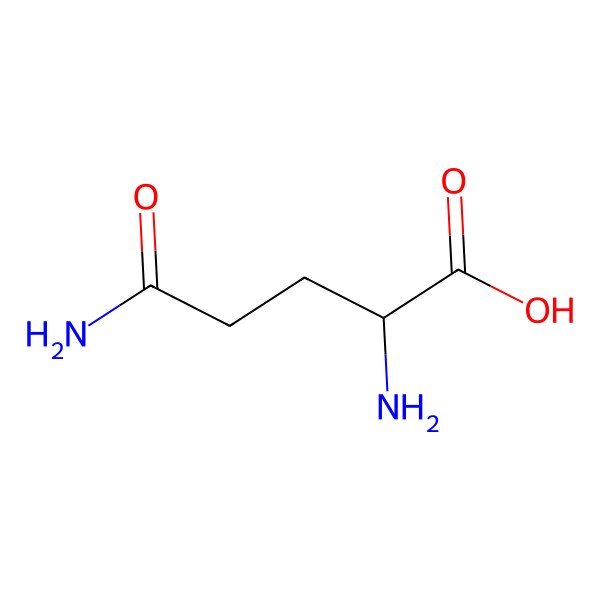| glutamine |
| 56-85-9 |
| Levoglutamide |
| L-(+)-Glutamine |
| Glutamic acid amide |
| Cebrogen |
| Stimulina |
| (S)-2,5-Diamino-5-oxopentanoic acid |
| glumin |
| H-Gln-OH |
| Levoglutamid |
| glutamic acid 5-amide |
| L-Glutamide |
| 2-aminoglutaramic acid |
| Glavamin |
| Miglu-P |
| Nutrestore |
| Saforis |
| L-2-Aminoglutaramidic acid |
| L-Glutamin |
| L-Glutamic acid gamma-amide |
| Glumin (amino acid) |
| (2S)-2-amino-4-carbamoylbutanoic acid |
| L-2-Aminoglutaramic acid |
| L-Glutamic acid 5-amide |
| (2S)-2,5-diamino-5-oxopentanoic acid |
| Glutamine (VAN) |
| Levoglutamida |
| Levoglutamidum |
| FEMA No. 3684 |
| 2-Aminoglutaramic acid, L- |
| GLUTAMINE, L- |
| L-gln |
| Pentanoic acid, 2,5-diamino-5-oxo-, (S)- |
| Glutamine [USAN] |
| Levoglutamidum [INN-Latin] |
| 2,5-Diamino-5-oxopentanoic acid, (S)- |
| Levoglutamida [INN-Spanish] |
| AI3-24392 |
| NSC 27421 |
| Levoglutamina |
| L-Glutaminsaeure-5-amid |
| BRN 1723797 |
| L-Glutamid |
| EINECS 200-292-1 |
| Glutamine [USP] |
| UNII-0RH81L854J |
| ENDARI |
| CCRIS 9428 |
| L-Glutamine [JAN] |
| CHEBI:18050 |
| HSDB 8165 |
| 0RH81L854J |
| MFCD00008044 |
| NSC-27421 |
| CHEMBL930 |
| 26700-71-0 |
| Glutamine [USAN:USP:INN] |
| gln |
| DTXSID1023100 |
| Glutamine (INN) |
| Glutamine (USP) |
| glum |
| 4-04-00-03038 (Beilstein Handbook Reference) |
| [3H]glutamine |
| GLUTAMINE [INN] |
| GLUTAMINE (D) |
| [14C]glutamine |
| [3H]-glutamine |
| Glutamine (L-Glutamine) |
| [14C]-glutamine |
| Levoglutamide [DCF:INN] |
| GLUTAMINE (MART.) |
| GLUTAMINE [MART.] |
| GLUTAMINE (USP-RS) |
| GLUTAMINE [USP-RS] |
| glutamina |
| gamma-Glutamine |
| Hgln |
| 184161-19-1 |
| GLUTAMINE (USP MONOGRAPH) |
| GLUTAMINE [USP MONOGRAPH] |
| l glutamine |
| Glutaminsaeure-5-amid |
| d(-)-glutamine |
| GLUTAMINE,L- |
| glutamic acid gamma-amide |
| (2S)-2,5-diamino-5-oxopentanoate |
| GLUTAMINE (L) |
| L-Glutamic acid .gamma.-amide |
| CHEBI:28300 |
| glutaminum |
| Glutacerebro |
| Gebrogen |
| Glutaven |
| Memoril |
| laevo-glutamine |
| GlutaSolve |
| L-glutamina |
| AES-14 |
| (C5-H10-N2-O3)x- |
| 3h-l-glutamine |
| Q. Levoglutamide |
| 1wdn |
| (S)-glutamine |
| Sympt-X |
| Nutrestore (TN) |
| S(+)Glutamine |
| Glutapak-10 |
| Resource Glutasolve |
| L-Glutamine Powder |
| Cebrogen, Stimulina |
| L-Glutamine,(S) |
| S(+)-Glutamine |
| H-Gln |
| Aesgen-14 |
| Endari (TN) |
| L-Alanyl-L-glutamide |
| Sympt-X G.I. |
| Glutamic acid-5-amide |
| Spectrum_000131 |
| L-Glutamine [JAN] |
| starbld0006818 |
| L-Glutaminsaure-5-amid |
| SpecPlus_000380 |
| GLUTAMINE [MI] |
| L-Glutamine (JP17) |
| GLUTAMINE [INCI] |
| Spectrum2_001377 |
| Spectrum3_001416 |
| Spectrum4_001709 |
| Spectrum5_000418 |
| GLUTAMINE [VANDF] |
| L-Glutamine, 98.5% |
| bmse000038 |
| bmse001014 |
| D01JIA |
| L-GLUTAMINE [FCC] |
| 1-2-Aminoglutaramidic acid |
| L-GLUTAMINE [FHFI] |
| SCHEMBL7453 |
| L-GLUTAMINE [VANDF] |
| Lopac0_000549 |
| BSPBio_003092 |
| GTPL723 |
| KBioGR_002038 |
| KBioSS_000591 |
| DivK1c_006476 |
| SPECTRUM1500987 |
| N-(2)-L-alanyl-L-glutamine |
| S(+)-Glutamic acid 5-amide |
| SPBio_001334 |
| L-[3,4-3H(N)]glutamine |
| LEVOGLUTAMIDE [WHO-DD] |
| DTXCID503100 |
| GTPL4633 |
| GTPL4634 |
| GLUTAMINE [ORANGE BOOK] |
| SCHEMBL19240116 |
| SCHEMBL23124227 |
| BDBM18121 |
| KBio1_001420 |
| KBio2_000591 |
| KBio2_003159 |
| KBio2_005727 |
| KBio3_002312 |
| L-Glutamine, Cell Culture Grade |
| L-GLUTAMINE [ORANGE BOOK] |
| HMS3261N19 |
| HMS3264C03 |
| Pharmakon1600-01300018 |
| Pharmakon1600-01500987 |
| (S)-2,5-Diamino-5-oxopentanoate |
| HY-N0390 |
| (2S)-2-amino-4-carbamoylbutanoate |
| Tox21_500549 |
| CCG-38853 |
| NSC759628 |
| NSC760081 |
| s1749 |
| AKOS015854078 |
| (S)-2-Amino-4-carbamoyl-butyric acid |
| AM81759 |
| CS-1947 |
| DB00130 |
| LP00549 |
| NSC-759628 |
| NSC-760081 |
| SDCCGMLS-0066691.P001 |
| SDCCGSBI-0050532.P005 |
| (S)-2-Aminopentane-dioic acid 5-amide |
| NCGC00093936-01 |
| NCGC00093936-02 |
| NCGC00093936-03 |
| NCGC00093936-04 |
| NCGC00093936-05 |
| NCGC00093936-15 |
| NCGC00261234-01 |
| AS-11765 |
| BP-13284 |
| LS-71898 |
| SBI-0050532.P003 |
| L-Glutamine, BioUltra, >=99.5% (NT) |
| EU-0100549 |
| G0063 |
| L-Glutamine, SAJ special grade, >=99.0% |
| EN300-52640 |
| C00064 |
| D00015 |
| D70833 |
| E-6014 |
| G 3126 |
| M02960 |
| AB00173347-03 |
| AB00173347_04 |
| L-Glutamine, ReagentPlus(R), >=99% (HPLC) |
| L-Glutamine, Vetec(TM) reagent grade, >=99% |
| A831906 |
| A937790 |
| L-glutamine (oral, short bowel syndrome), Emmaus |
| L-Glutamine, Cell Culture Reagent (H-L-Gln-OH) |
| Q181619 |
| 7FBA778C-D6B8-495C-BFE7-1CB8EC4ABEAB |
| J-521645 |
| Q-100459 |
| BRD-K83896451-001-01-8 |
| F0001-1471 |
| L-Glutamine, certified reference material, TraceCERT(R) |
| Z756440074 |
| (S)-2,5-Diamino-5-oxopentanoic acid, L-Glutamic acid 5-amide |
| Glutamine, United States Pharmacopeia (USP) Reference Standard |
| L-glutamine (topical, chemotherapy-induced mucositis), Aesgen |
| L-Glutamine, gamma-irradiated, BioXtra, suitable for cell culture |
| L-glutamine (oral, sickle cell anemia/sickle beta-0 thalassemia), Emmaus |
| L-Glutamine, Pharmaceutical Secondary Standard; Certified Reference Material |
| L-glutamine (oral, sickle cell anemia/sickle beta-0 thalassemia), Emmaus/University of California Los Angeles |
| L-Glutamine, meets USP testing specifications, cell culture tested, 99.0-101.0%, from non-animal source |
|
There are more than 10 synonyms. If you wish to see them all click here.
|
